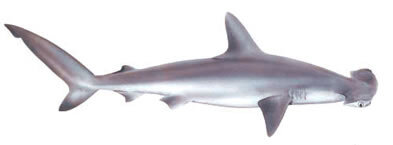ESPIRITU SANTO ARCHIPELAGO
Espíritu Santo Island is a National Park established in 2007. This island is the gateway to the southern Gulf of California, where an abundant and diverse tropical and subtropical marine fauna exists. It borders the Bay of La Paz to the west and overlooks the Gulf to the east, divided in two parts by a narrow channel called La Partida, and surrounded by several small islands. To the north lies a dramatic rock formation known as Los Islotes, home of a large colony of sea lions. Espiritu santo has a surface area of 96,258 km2 and is also protected as part of the Área de Protección de Flora y Fauna - Islas del Golfo de California (APFF-IGC). Together with all the Islands of the Gulf of Calfiornia, it was declared as a World Natural Heritage Site by UNESCO in 2005.
Project overview:
Espíritu Santo island’s shallow protected bays offer nursery areas for devil rays and small shark species. Off the northeast of Espíritu Santo, approximately 10 nautical miles, lies the El Bajo Seamount known for the schools of hammerhead sharks and sightings of large female whale sharks, making it a hotspot for shark activity.
We are carrying out different studies at Espíritu Santo Island with the following overarching goals:
- Understand movements, residency and migratory patterns of hammerheads and other shark species using acoustic and satellite telemetry
- Understand population size and structure, and connectivity of hammerheads and other species of sharks using mark-recapture techniques and genetics
- Determine nursery areas for the devil Ray (Mobula munkiana) in the shallow embayments of the island
Activities:
1. Conventional tagging. Spaghetti tags are placed on scalloped hammerhead sharks. This type of tag is affixed to the base of the first dorsal fin to estimate the population size through recaptures.
2. Ultrasonic tagging. We affix ultrasonic transmitters on different species of sharks. We use ultrasonic tags, which emit a specific code that is recorded by acoustic receivers (listening stations). The transmitters are placed externally in the base of the dorsal fin with a Hawaiian sling used for spearfishing by SCUBA or free divers. Transmitters are also put internally in the intraperitoneal cavity through capture and a small surgery.
3. Listening stations. The stations consist of an underwater receiver VR2W (Vemco Ltd) that records acoustic pulses from the ultrasonic tags in a maximum range of 500 m. The stations are placed at depths between 20 and 40 meters at shark and pelagic fish aggregation sites. We have 5 listening stations distributed around the island.
4. Satellite tagging. Satellite transmitters are designed to track the large-scale movements and behavior of fish and sharks. These transmitters are equipped with light, temperature, depth and accelerometer sensors, that either archives data in an onboard memory or transmits during deployment. We are deploying satellite transmitters in hammerhead sharks.
5. Genetics. We collect skin biopsies for genetic analysis, with the goal of identifying differences between populations in the Gulf of California.
6. Devil Ray activities. We are assessing the potential of Espíritu Santo bays as nursery area for devils ray M. munkiana. We examine spatial use of the bays in relation to seasonal environmental patterns using a combination of nonlethal methodologies such as traditional tagging, passive acoustic telemetry and stable isotopes analysis.
Other institutions participating in this Project:
- Centro Interdisciplinario de Ciencias Marinas-IPN
- Centro de Investigaciones Biológicas del Noroeste
- Instituto de Ciencias del Mar y Limnología, Unidad Mazatlán, UNAM
- University of California, Santa Cruz
Species under investigation:
Whale Shark (Rhincodon typus)
Silky Shark (Carcharhinus falciformis)
Scalloped Hammerhead Shark (Sphyrna lewini)
Smooth Hammerhead Shark (Sphyrna zygaena)
Devil Ray (Mobula munkiana)






